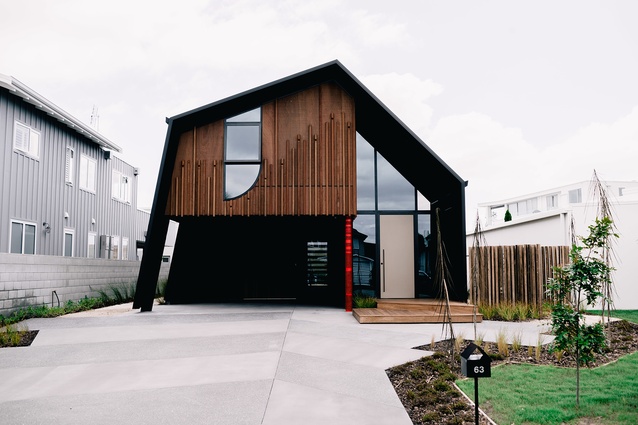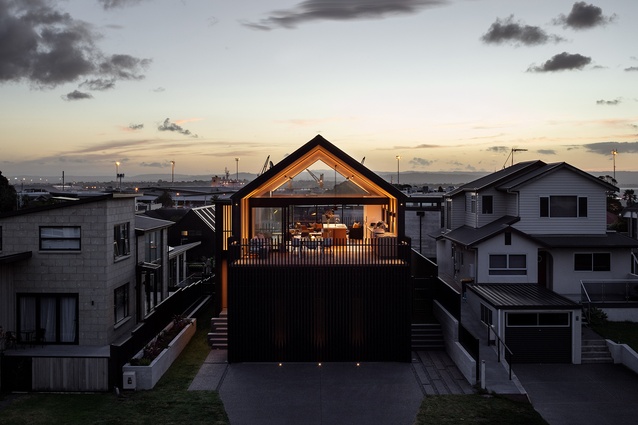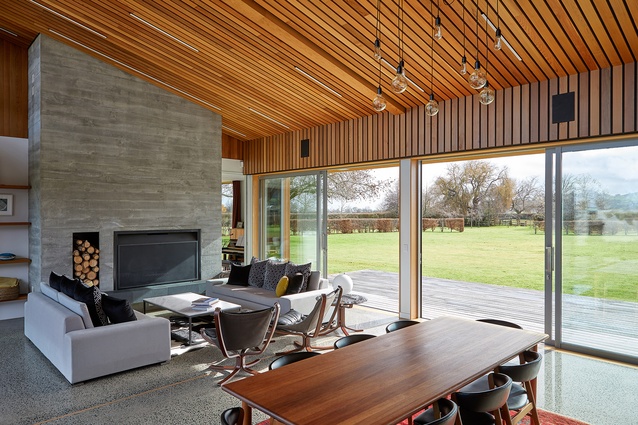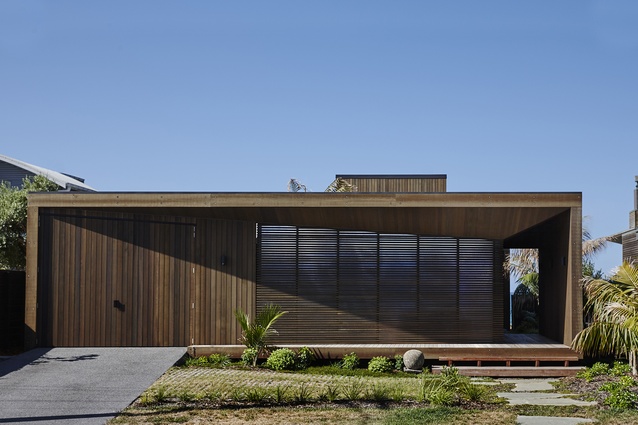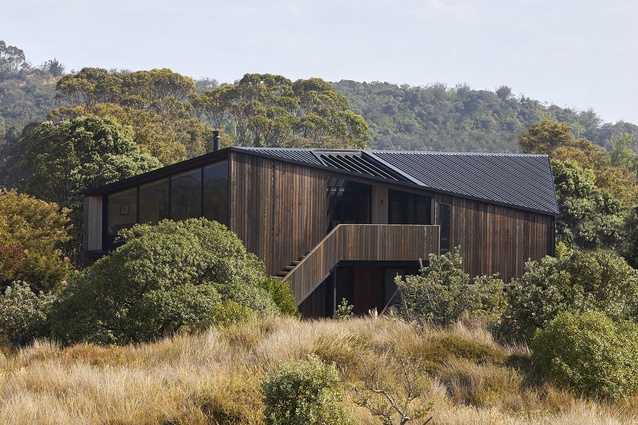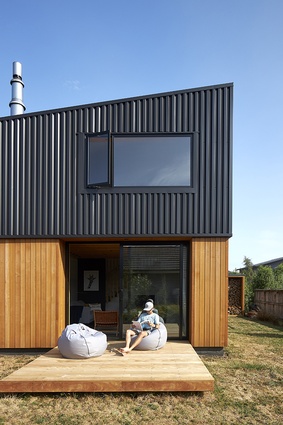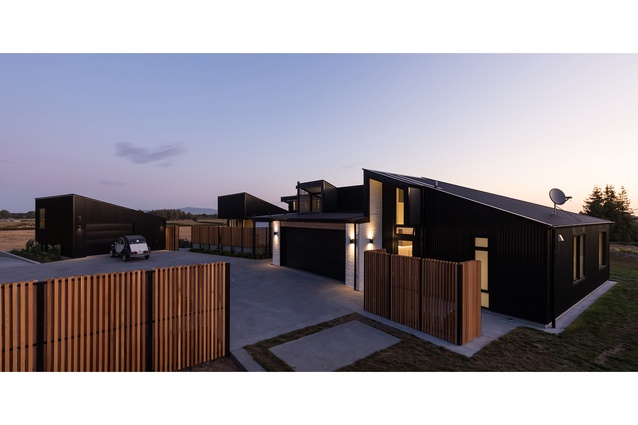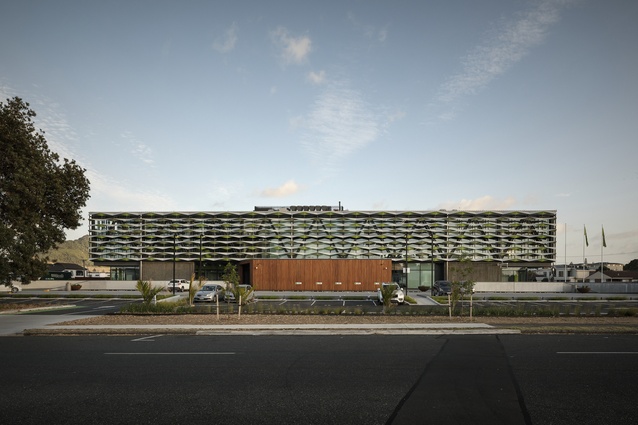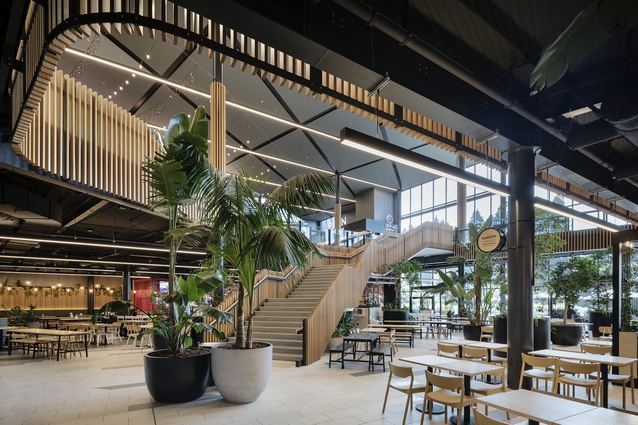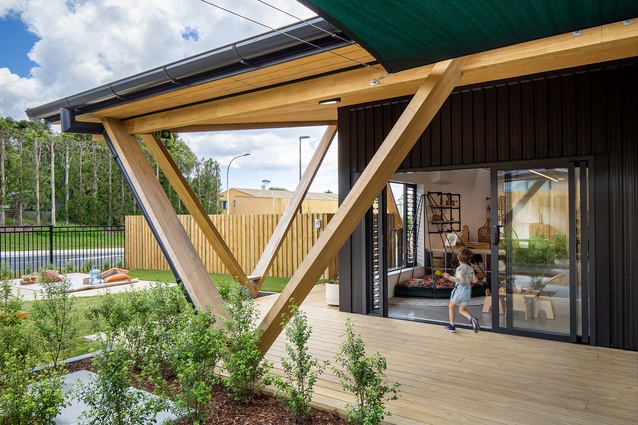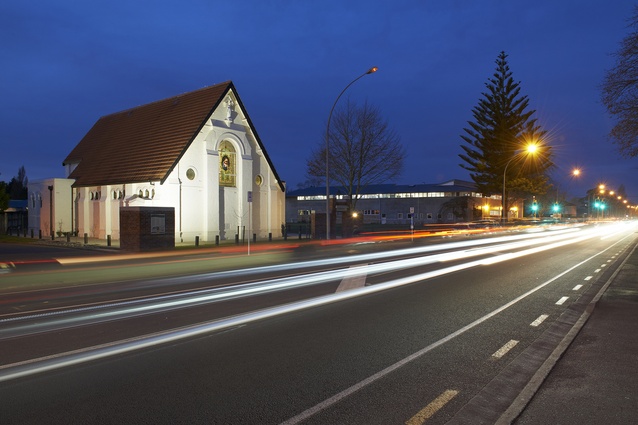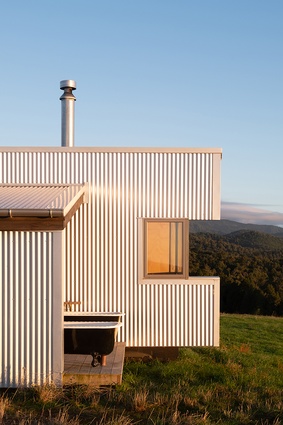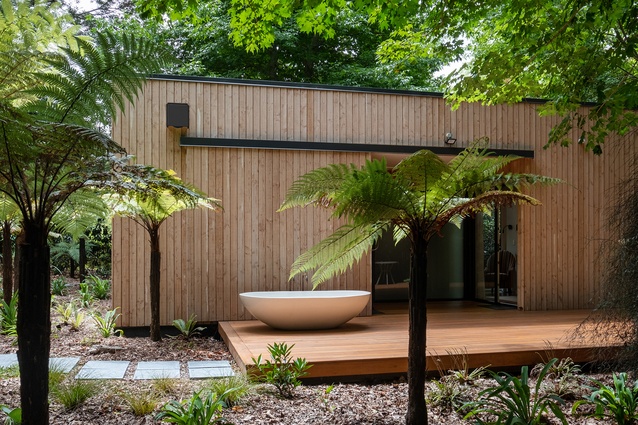Winners revealed: 2020 Waikato/Bay of Plenty Architecture Awards
The local branches of Te Kāhui Whaihanga New Zealand Institute of Architects (NZIA) held their awards slightly differently this year, as the time that would usually be spent with the jury visiting each of the shortlisted projects was spent in COVID-19 related lockdown country-wide. Each of the eight awards ceremonies will be presented by way of an online, virtual event this year.
The Waikato/Bay of Plenty region was first up, announcing 24 winning projects across five categories on 24 June 2020. The judging panel was led by Tauranga architect John Henderson and included architects Sharon Jansen and Fraser Cameron and Alice Hutchinson, Director of Tauranga Art Gallery.
“We were encouraged by a growing emphasis on building quality,” Henderson said. “It was great to visit warm, healthy buildings that embody the best of sustainable design practices.”
See the full line-up of winners below with jury citations.
Housing
Maungārongo by TOA Architects
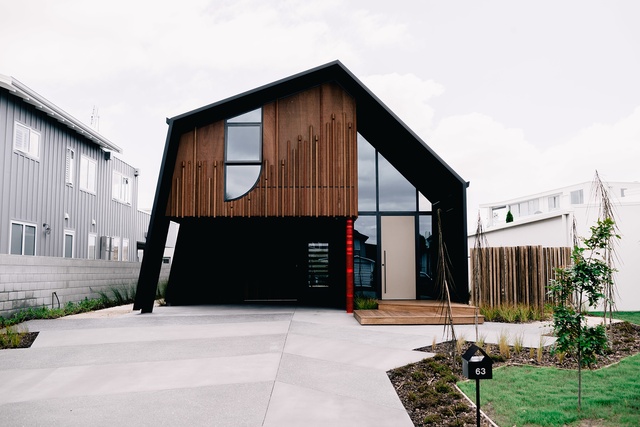
This compact whare evolved out of the clients’ desire to create a contemporary Māori domestic space, and the resulting design is a deeply personal one, steeped in meaning and informed by whakapapa. The home has a spiritual and cultural relationship to the land and is carefully aligned with Mauāo (Mt Maunganui) and connected to Otūmoetai Pā; it is also considerate of the site’s climate and environment. Entry is by invitation to the back of this refreshingly different house, into a space of welcome and the heart of the home. And the name? It means ‘peace’.
Generational House by Studio2 Architects
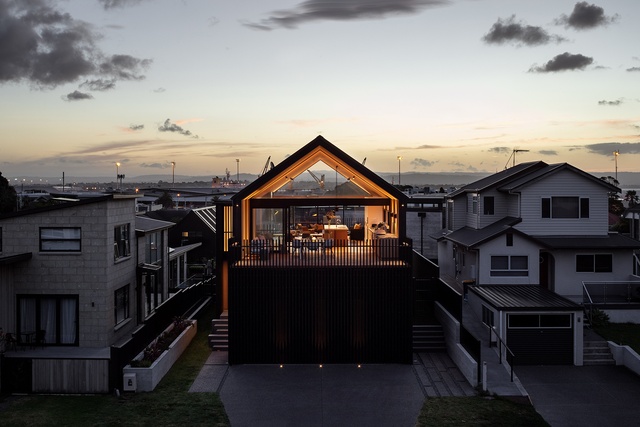
This tall gable form sits on a tight site in the densely packed suburb of Mount Maunganui. The living areas are on the upper floor forming a Great Room, with a cedar-lined ceiling and glazed ends to capture views. At night, the lit underside of this form becomes a beautiful golden lantern in the neighbourhood. This house, which utilises products from the client’s own timber business, is carefully detailed and has been skilfully realised.
Hill House at Hahei by Felicity Wallace Architects
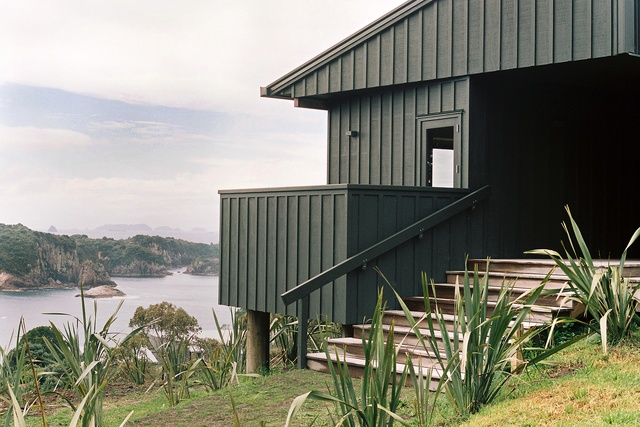
The architect’s response to a brief for a pole house has resulted in a holiday home that winds its way up, over and through a grid of variable-height tanapoles. Part fort and part tramper’s hut, the robust house is playful and surprising, revealing and concealing views over Hahei and the headland. With its series of indoor and outdoor spaces punctuated by poles, the design succeeds as a strong and idiosyncratic shelter against the elements.
Three Gables by Edwards White Architects
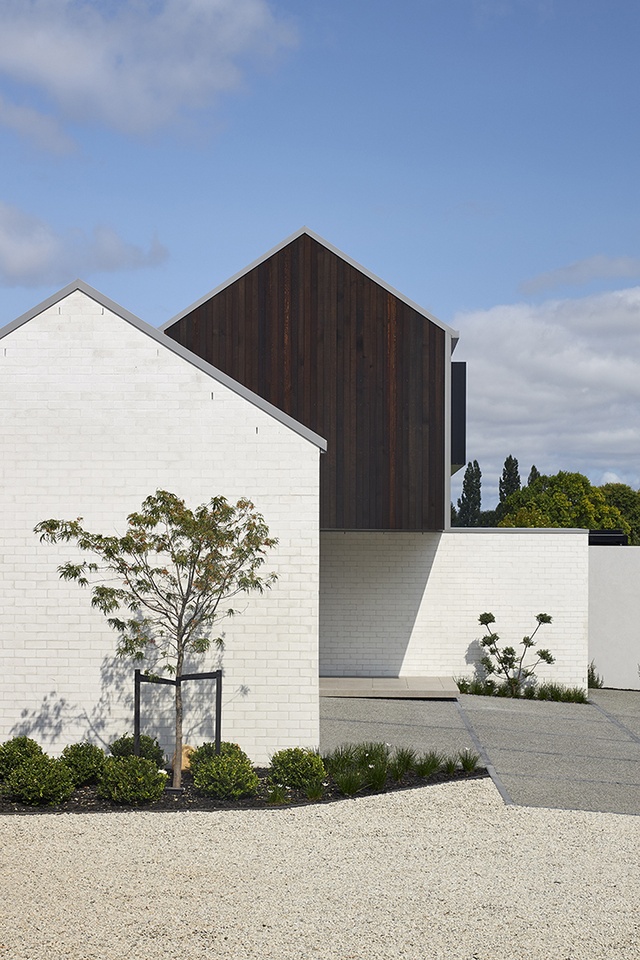
Carefully designed to maintain important thresholds of privacy on the higher eastern side and lower western park aspect, this home maintains openness towards the view and opportunities for neighbourly interaction with park users. The interlocking gables, thrust in part over the lower walls, provide attractive massing from the street. The compact and thoughtful plan, together with well-proportioned courtyards, make this house a joy for its owners.
Hot Water Beach House by Scarlet Architects
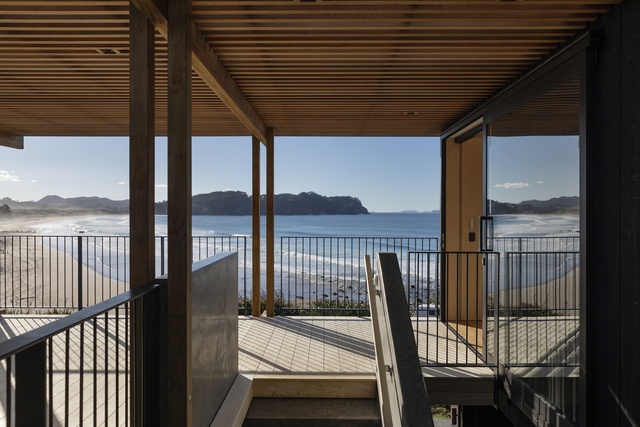
In response to the orientation, slope and unusual shape of this site, this home is organised around a triangular courtyard flanked by verandas and a central breezeway. As a result, sea views are available from every space, maximising the home’s connection to its environment. With its predominantly dark exterior and elemental interior scheme of pale timbers, this house is a worthy replacement for an old family bach and should ensure flexible occupancy by multiple generations for many years to come.
Aspin Road House by Studio Pacific Architecture
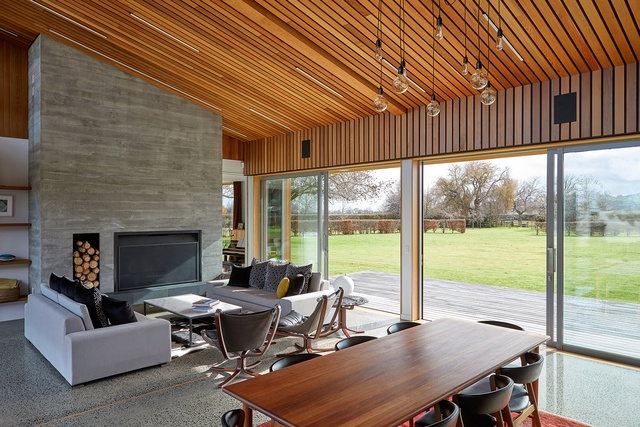
This contemporary courtyard house with subtle modernist references retains an echo of the country villa with classic proportions. Framed views, considered symmetries, and a clean and simple palette of materials make this a very comfortable family home. Built to high contemporary standards, the house is the realisation of years of planning and a high level of client input.
Thornton Road Passive House by Architype
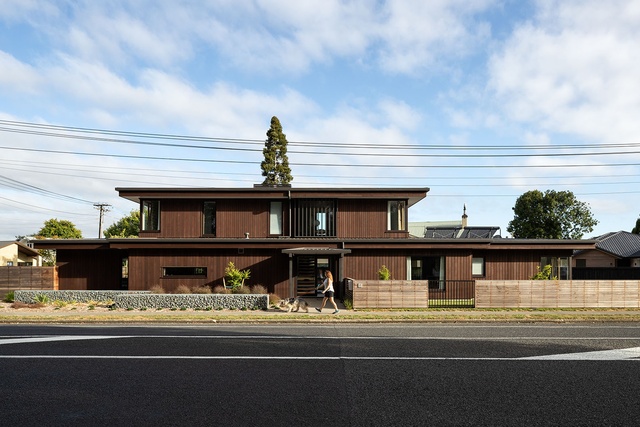
Proudly possessed of international Passive House status, this home’s low-key massing and colouring allow it to sit comfortably within its context. The decision to move into the street yard to the south not only creates a more useful northern yard, but also means the houses engages with the street and park beyond. The house is sensibly organised for the retired owners, who need to move only about the ground floor, and provides space for visiting family to stay on the upper level.
Papamoa Beach House by Herbst Architects

This home offers a unique approach to planning the entry and circulation on a long, narrow beach site. Angled walls and soffits form the gateway, drawing visitors towards a telescoped view of the sea. The circulation loops back inside the veil, past bedrooms, to emerge in the bathing court on the west, undetected by neighbours or passers-by. The circuit is completed by the sunny northwest lawn. The living spaces and upper level master suite are clad in sombre, restful hues, like the old smoked wood of ryokan. The veil walls and entry court resemble modern shoji that alternate between screen and lantern.
Bowentown Bach by Edwards White Architects

This strong external form is about refuge in a singular object of character, in contrast to the courtyard and pavilion approach now familiar on New Zealand’s east coast. The weathered shell is carefully incised, revealing only an entryway cut to the street. Upon entry, however, a warm, honeyed living space looks out to the expansive foredune and sea. A second cut allows for the northern deck and access down to the dunes.
Kinloch Bach by Edwards White Architects
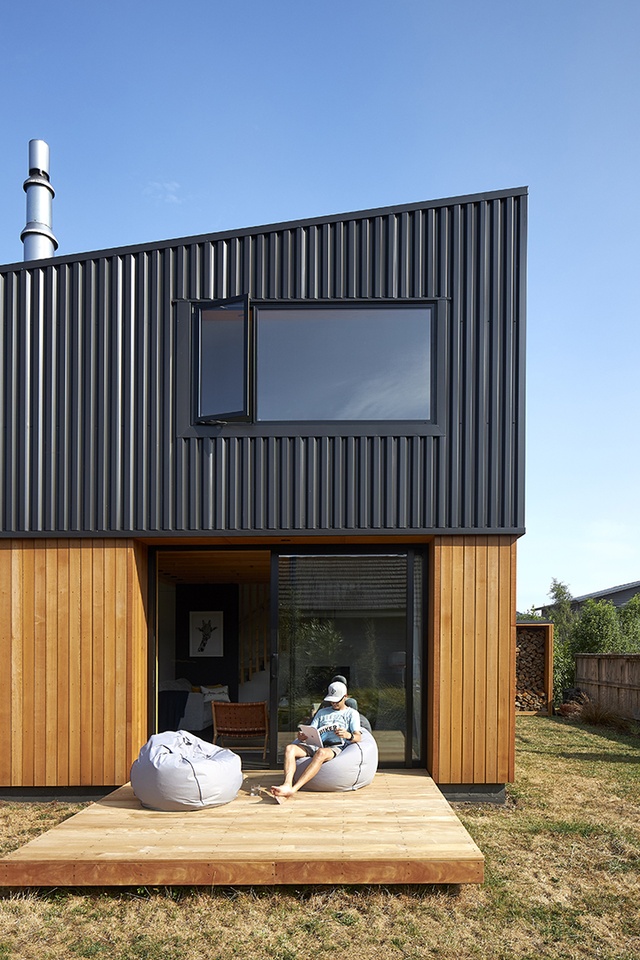
The holiday home is rethought with this stripped-back approach to contemporary bach comforts and conventions. An economy of programme and structure has provided a refreshing response that is more enticing than its more ambitious suburban neighbours. On approach, the street-side form is cut away to create a loggia that is both entry and living porch. This first shed form also accommodates utility space and simple bedrooms that share northern light through translucent gallery panels. A second shed form is devoted to double-height living space and a mezzanine retreat. The warmth of this social space is enhanced by the exposed timber floor structure and detailing.
Robertson Residence by PAUA Architects
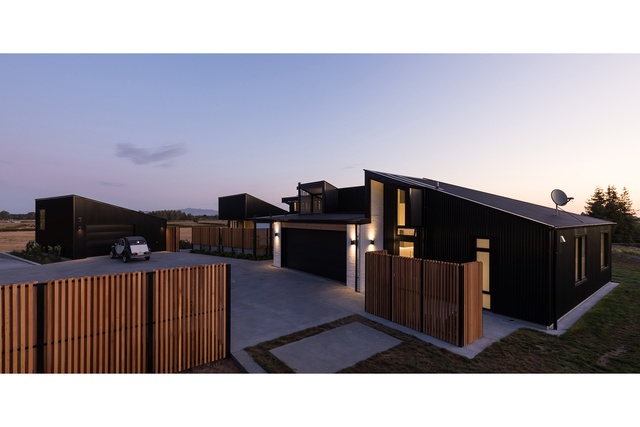
This home is conceived as a collection of rural forms arranged on a hilltop to align with strong and compelling views to Pirongia and Maungatautari. This assemblage also allows a rich variety of space within and between the shed forms. Site exposure is mitigated, and opportunities created to open or close the house according to the season and weather. Robust materials in black and white are softened by timber landscape screens, and textured plywood ceiling detail. The main living pavilion allows sunlight to filter through a full-length clerestory and fall on the thermal mass of interior brick cladding. A warm and inviting space is created within the hard-line industrial shell. The design is both a bold response to a particular site, and a sensitive solution to dwelling there.
Two Six Splay House by Architecture Bureau

This townhouse explores the idea of the home as fluid space. The design creates a journey from the busy public realm of the street through relaxed family spaces to the unexpected breadth of a park outlook. The longitudinal splay planning is a dynamic response to this linear experience; it allows variance and flow within a narrow envelope and creates opportunities for the living space to open to various north-facing garden and courtyard areas. The building form is strongly articulated with contrasting horizontal modelling of cedar box floating over a brick base. A privacy veil of metal screening is fitted into the upper openings, and repeated vertical battens accentuate the movement of the splay. The design is a spatial solution that benefits from the site’s limitations, and has a delightful family living space at its heart.
Hikuai Hill House by Dorrington Atcheson Architects
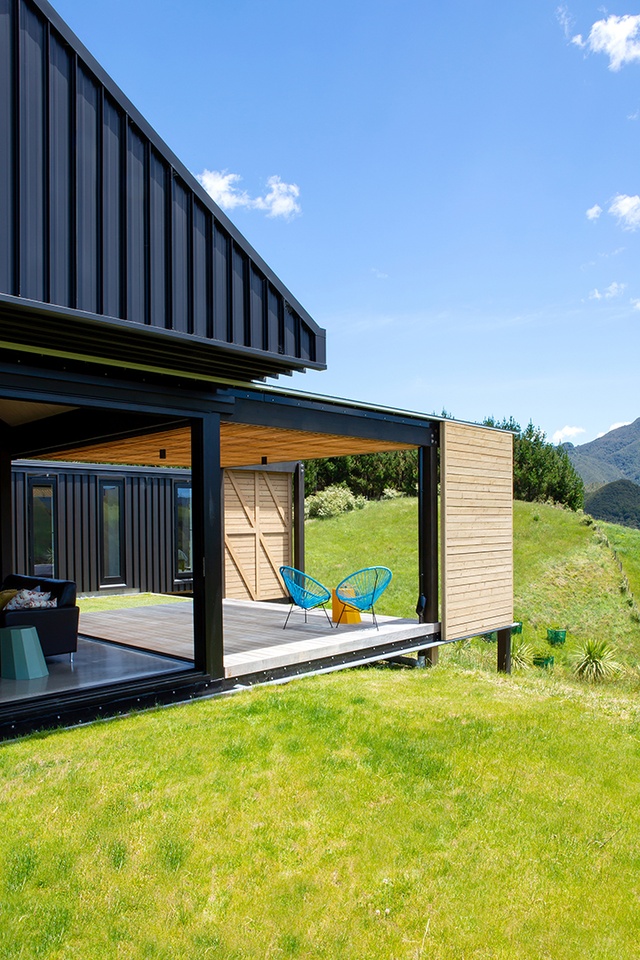
A spectacular site, and clients who long contemplated escaping into a rural idyll, have resulted in a compact and faithful expression of the clients’ ideals. A strongly axial arrangement has at its centre the open living pavilion – a spare, contemplative space. Intersecting forms provide secondary and utility space, and a screened northern porch floats into the landscape and frames the mountain views. A floating gable signals the rural home; outstretching ancillary forms are modelled in contrasting steel and larch.
Light Mine by Crosson Architects
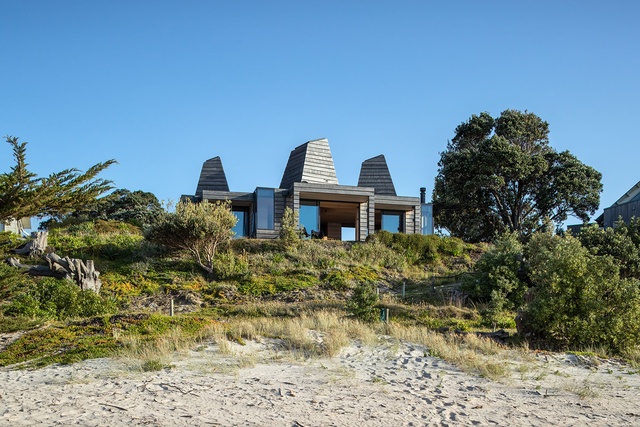
Externally clad in reclaimed totara, three separate living spaces are unified by uniquely sculptural, off-grid skylights projecting above the roof, referencing the mine shafts of this former gold-mining town. Inverted into sculptural shafts reminiscent of James Turrell ‘Skyspaces’, the skylights allow sun- and starlight to enter each room, and they also function as thermal shafts. The highly crafted timber interiors of this private sanctuary open out to expansive views of the sea.

Commercial Architecture
Tauranga Airport by Jasmax
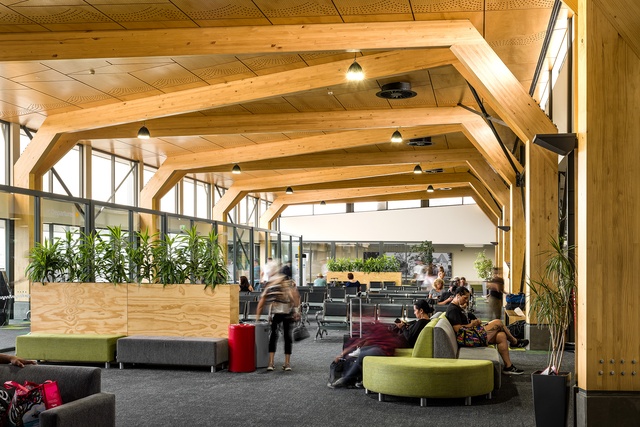
A new arrivals and departures space has been elegantly stitched onto the existing terminal at Tauranga Airport, creating a strong new identity for the region’s airline gateway. Staggered diagonal Glulam portals and steel cross-bracing integrated this area with the existing terminal, which was stripped back to expose the steel roof structure. The extension and reconfiguration of the building provides greater clarity, openness and ease of use.
Riverbank Chambers by Edwards White Architects
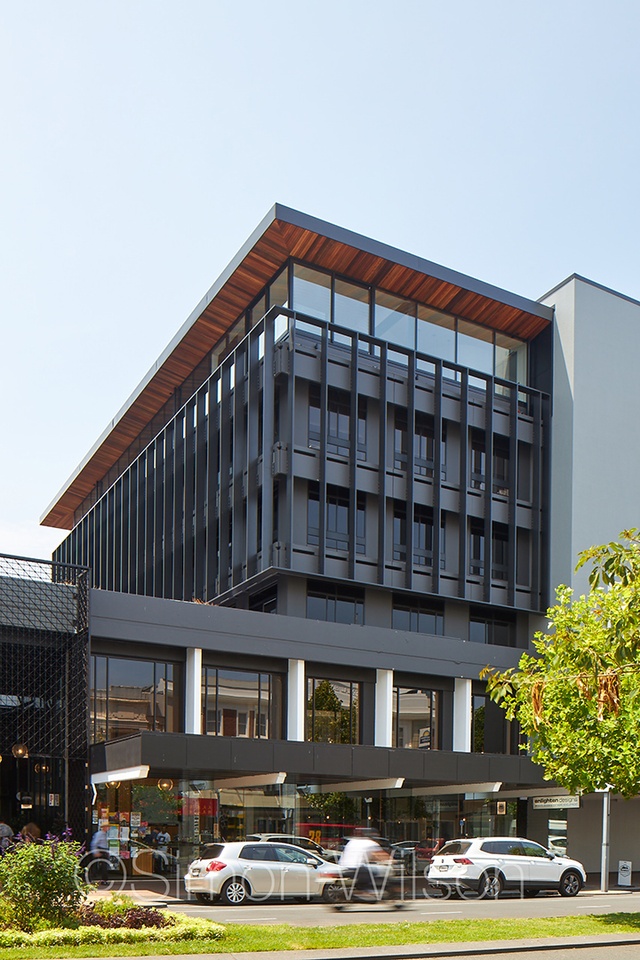
The building has been completely refurbished to link to earlier developments by the same architects. Exterior vertical louvre fins and a glazed roof addition have given the building a clearly legible base, middle and top. A cedar soffit to the new floating roof brings warmth to the whole scheme, which glows softly at night. The elegant top floor fitout provides broad views over the river and city, creating a very desirable workplace.
Zespri by Warren and Mahoney Architects and Architecture Page Henderson in association
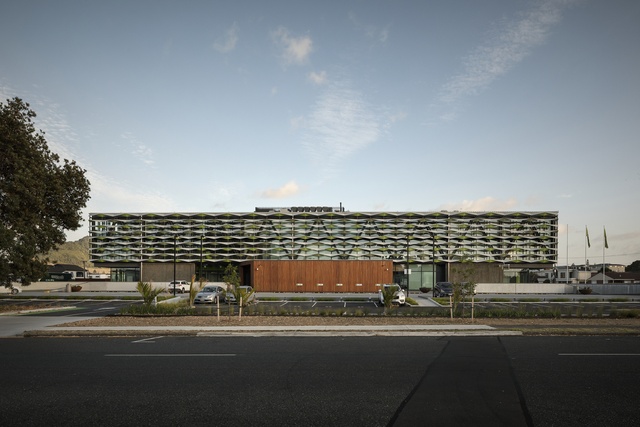
Highly articulated screens, reminiscent of vine and shade cloth, wave from the long north and south façades to passers-by. For those seated within, the screens afford shade and an undulating frame to Mauao (Mount Maunganui) and the local environs. The building, which benefits from environmentally sustainable material selection, is a lively workplace and signature presence between the utilitarian port sector and the residential eastern part of the city.
Resene Colour Award Winner
Much like the kiwifruit that this Kiwi company exports to the world, the Zespri building feels fresh and energetic. A zingy palette of greens paired with timber produces a space that reflects the dynamism of the brand and its horticultural DNA.
Tauranga Crossing by Warren and Mahoney Architects

This generous and attractive civic space is not just another mall – it provides a compelling example of what modern, multi-shop experiences can be. The design is based on two key intersecting axes which generate a diagrid ceiling canopy over the retail village and entertainment spaces. The shorter axis spectacularly opens on its north side to reveal a lush fernery and backyard, and the building’s interior climate is carefully regulated using both passive and active systems, encouraging visitors to dwell a little longer.
Foster Group Headquarters by Edwards White Architects
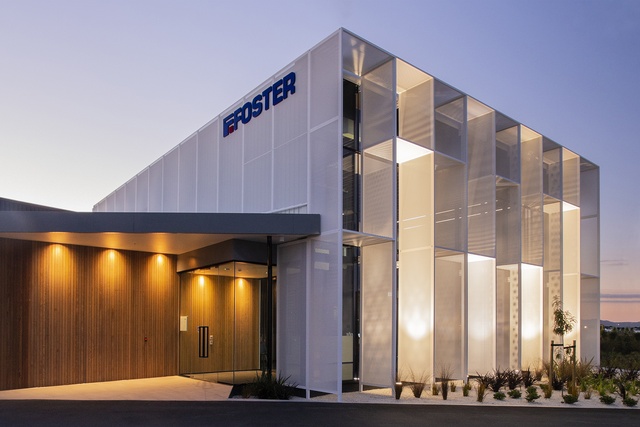
This building displays an uncommon concern for quality and design detail in an industrial context. The luminous mesh façade has a proud street presence and serves as a dynamic signboard for the business behind. Building forms are deftly modelled with skewed geometry and contrasting materials to signal function and lessen the effect of warehouse bulk. Interior spaces are well-considered environments, with expressed material and service details. The material choice and detailing showcase both the client’s business and the art of construction and create spaces appropriate to their use and of human scale. The result of the commitment by client and architect to design quality is a building that is both a demonstration of their ambition and an inviting workplace.
Education
University of Waikato Tauranga CBD Campus by Jasmax
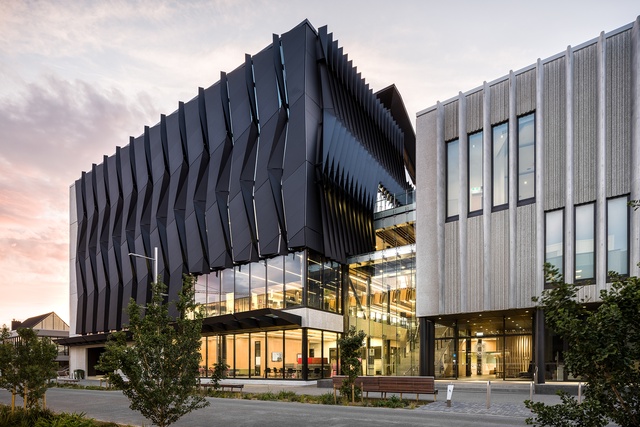
This new campus links two streets with a new pedestrian laneway and creates a welcoming urban space. The building is massed into two volumes, establishing a sensitive street scale and articulating different functions within. Bicultural design and storytelling are embedded in the expression and sequencing spaces, as well as the skin of the building. The buildings have a great sense of connectivity to place and have established a strong living presence in the city.
The Lakes Early Childhood Education Centre by Copeland Associates Architects
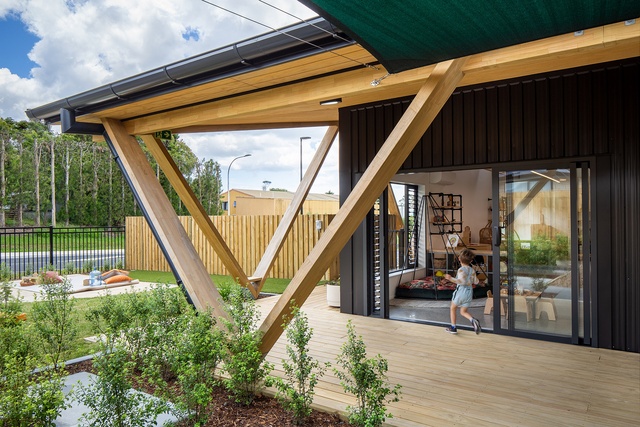
A strong sheltering roof form is combined with a dynamic timber structure to create a stimulating learning space that satisfies stringent regulatory requirements. A generous and well-considered veranda zone invites free movement between inside and out, offering a richness and variety of space for groups of varying age, number and mood. Shelter, sunlight, air, tactile materials and child perspective are sensitively considered in each space. The architecture successfully provides protection and is also a progressive and human solution to an institutional brief.
Heritage
St Mary’s by PAUA Architects
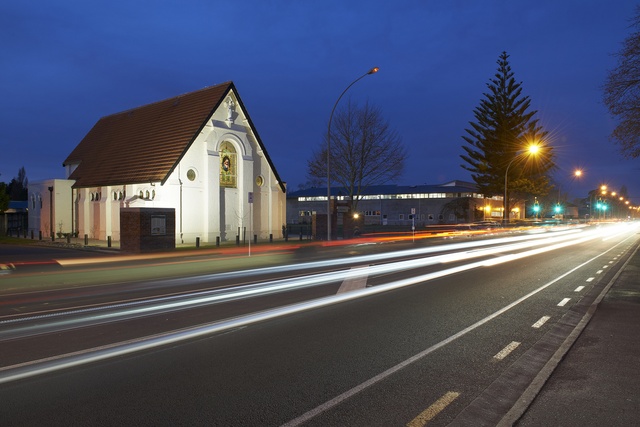
Intervention and renovation have given new life to the chapel of St Mary’s Convent Chapel, designed in 1926 by Hamilton architect Jack Chitty. This small but important church was threatened with demolition; instead, it has been extensively strengthened and upgraded. The necessarily invasive work was completely concealed through the realisation of clever material choices. New facilities such as a ramp and entry gate were seamlessly integrated into the original structure, using reclaimed materials where possible. It is heartening to see our built heritage retained and restored with such care.
Small Project Architecture
Ao Marama Retreat by OPL and Mitchell Stout Dodd Architects in association

This truly rustic retreat invokes the collective Kiwi memory of remote huts and simple comfort. The quintessential hut is reinvented by the architect via an elegantly articulated vernacular form and structure. Warmth, humour and comfort are intertwined with robust solutions to the challenges of living in an exposed and remote environment. There is no ‘rustic modern’ veneer, and unique solutions providing comfort and amenity are worked into the small footprint.
Chemis Cabin by DCA Architects of Transformation
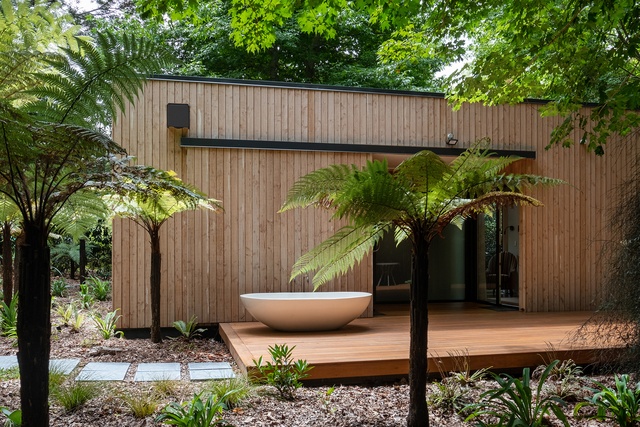
Nestled unobtrusively into a lush native bush environment, this highly compact rectangular cabin composed of three connected cells – bedroom, living space and kitchenette, central bathroom – is concealed and secured by a sliding wall. An ample deck extends into a garden with outdoor bath. Passive House design principles are realised in a high-performing insulated exterior with airtight interiors and heat recovery system. Ample natural light filters through large windows, opening the interior into the garden setting and unifying the indoors with the natural environment.
The NZIA Local Awards programme has been supported by Resene for the last 30 years.


